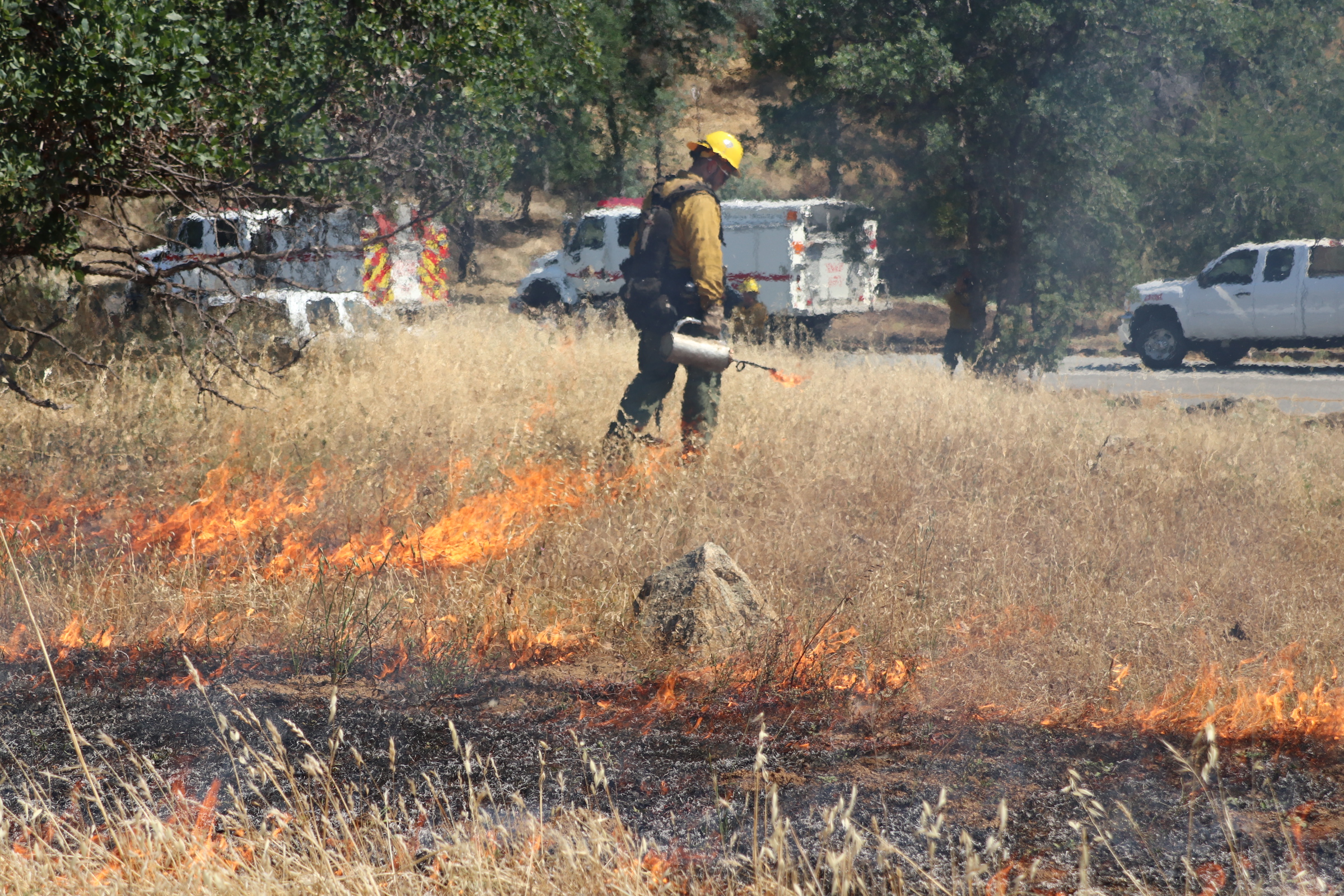News Release
You are viewing ARCHIVED content published online before January 20, 2025.
Please note that this content is NOT UPDATED, and links may not work. For current information,
visit https://www.nps.gov/aboutus/news/index.htm.

NPS/RPaterson
|
Subscribe
|
Contact: Fire Information Office, 559 565 3704
SEQUOIA NATIONAL PARK, Calif. June 23, 2019 – As of this afternoon, ignitions are complete on the Ash Mountain Prescribed Burn in Sequoia National Park. Approximately 28 acres have been treated with prescribed fire, and another 12 acres are being treated mechanically (e.g., weed whipping, grazing pack stock).“Prescribed burning in these high-use foothills areas provides an important buffer against potential wildfires over the course of the summer,” says Kelly Singer, Sequoia District Fire Management Officer. “Even though daytime temperatures are getting intense in the foothills, we were able to make effective use of morning hours to complete this burn safely. We’re grateful to the resources from Santa Monica Mountains, Cal Fire, and Tulare County, as well as the community for supporting us in getting this important project done.”
Visitors to the parks may see fire effects along the Generals Highway between the Sequoia entrance station and Hospital Rock, and are asked to exercise caution near recently burned areas, as embers and hot spots can persist after active fire has stopped. Light smoke may be visible in the area for several days as the remaining fuels continue to be consumed.
Visitors can learn more about air quality and smoke by visiting either www.airnow.gov or www.valleyair.org. For more information on this prescribed burn, visit https://inciweb.nwcg.gov/incident/5195/.
-NPS-
About Sequoia and Kings Canyon National Parks’ Fire Management Program
For over fifty years, our mission has been to use the full range of options and strategies available to manage fire in the parks. This includes protecting park resources, employees, and the public from unwanted fire; building and maintaining fire resilient ecosystems; reducing the threat to local communities from wildfires emanating from the parks or adjacent lands; and recruiting, training, and retaining a professional fire management workforce.
Last updated: June 26, 2019
